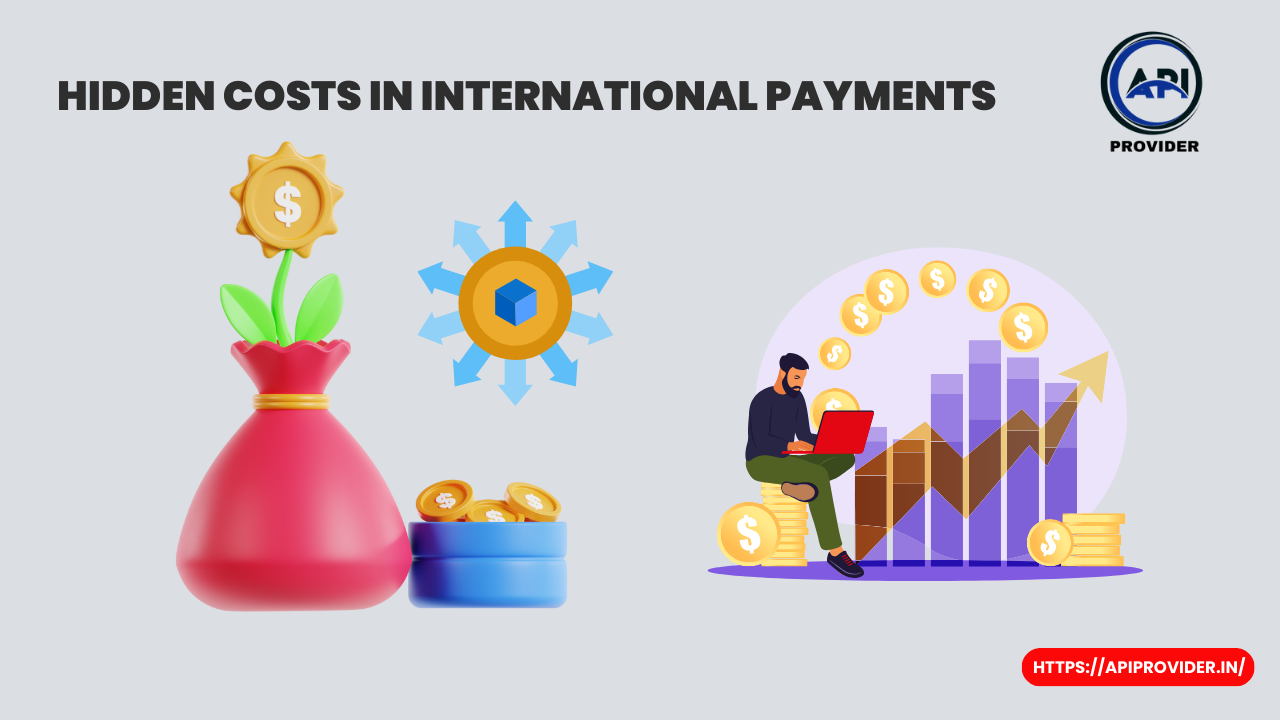Hidden Costs in International Payments: International payments are a crucial aspect of global business, enabling companies to engage in trade and services across borders. However, these transactions often come with hidden costs that can significantly affect your bottom line. Understanding and managing these hidden costs is essential for maintaining profitability and ensuring smooth international operations.

Understanding International Payments
What are International Payments?
International payments refer to the transfer of funds across national borders. These transactions can be for various purposes, including trade, services, investments, and personal remittances. They involve different currencies and financial institutions, making them more complex than domestic payments.
Common Methods of International Payments
- Wire Transfers: Direct transfers between banks, often used for large sums.
- Credit/Debit Cards: Convenient for smaller transactions but may come with high fees.
- Digital Platforms: Online services like PayPal, TransferWise, and Stripe that facilitate international payments.
Read More….
- Top 10 Best Payment Gateways In India for E-Commerce Business
- Adding a Beneficiary Without a Cooling-Off Period: A Comprehensive Guide
The Role of Digital Platforms in International Payments
How Digital Platforms Facilitate Payments
Digital platforms have revolutionized international payments by providing faster, more convenient, and often more cost-effective ways to transfer money. They offer user-friendly interfaces, real-time tracking, and support for multiple currencies, making them a popular choice for businesses and individuals alike.
Benefits of Using Digital Platforms
- Speed: Transactions can be completed in minutes.
- Convenience: Accessible from anywhere with an internet connection.
- Cost-Effective: Often lower fees compared to traditional banks.
Types of Hidden Costs in International Payments
Exchange Rate Markups
Exchange rate markups occur when the currency exchange rate used in a transaction is less favorable than the market rate. This hidden cost can significantly increase the total amount paid.
Transaction Fees
Transaction fees are charges imposed by financial institutions or payment platforms for processing a transaction. These can be flat fees or a percentage of the transaction amount.
Intermediary Bank Fees
When international payments go through several banks before reaching the final destination, each intermediary bank may charge a fee, adding to the total cost.
Conversion Fees
Conversion fees are applied when currency needs to be converted from one type to another. These fees can vary significantly depending on the provider.
Additional Service Charges
Service charges can include various fees for extra services such as urgent transfers, payment tracking, or currency hedging.
Exchange Rate Markups
How Markups Work
Financial institutions often add a markup to the exchange rate they offer, which is higher than the interbank rate. This markup is essentially a hidden fee that increases the cost of your international payment.
Identifying and Avoiding High Markups
To avoid high markups:
- Compare Rates: Check the exchange rates offered by different providers.
- Use Transparent Platforms: Choose platforms that disclose their exchange rates and fees upfront.
- Monitor Market Rates: Stay informed about the current interbank rates.
Transaction Fees
Types of Transaction Fees
- Flat Fees: A fixed amount per transaction.
- Percentage Fees: A percentage of the transaction value.
- Combination Fees: A mix of both flat and percentage fees.
How to Minimize Transaction Fees
- Choose Low-Fee Platforms: Use digital platforms known for low transaction fees.
- Consolidate Payments: Combine multiple transactions into one to reduce the number of fees.
- Negotiate Rates: If you frequently make international payments, negotiate lower fees with your provider.
Intermediary Bank Fees
What are Intermediary Banks?
Intermediary banks are financial institutions that facilitate the transfer of funds between the sending and receiving banks. Each intermediary involved in the transaction may charge a fee.
Impact of Intermediary Fees on Payments
Intermediary fees can accumulate, especially in transactions involving multiple banks, increasing the overall cost significantly.
Conversion Fees
Understanding Conversion Fees
Conversion fees are charged for exchanging one currency for another. These fees can vary based on the provider and the currencies involved.
Strategies to Reduce Conversion Fees
- Use Multi-Currency Accounts: Maintain accounts in multiple currencies to avoid frequent conversions.
- Choose Low-Fee Providers: Select payment providers known for low conversion fees.
- Convert Larger Amounts: Make fewer, larger conversions to minimize the impact of fees.
Additional Service Charges
Examples of Additional Charges
- Urgent Transfer Fees: Charges for expedited payments.
- Payment Tracking Fees: Fees for tracking the status of a payment.
- Currency Hedging Fees: Costs for protecting against currency fluctuations.
How to Spot Hidden Service Charges
- Read Terms and Conditions: Carefully review all fees listed by the provider.
- Ask for a Breakdown: Request a detailed breakdown of all charges before completing a transaction.
- Use Transparent Providers: Choose providers that clearly disclose all fees and charges.
The Importance of Transparency
Why Transparency Matters
Transparency in international payments ensures that you are aware of all costs involved, helping you to make informed decisions and avoid unexpected expenses.
How to Ensure Transparency in International Payments
- Use Reputable Providers: Choose established providers with a reputation for transparency.
- Review Fee Structures: Regularly review and compare the fee structures of different providers.
- Request Detailed Statements: Ask for detailed statements that clearly outline all charges.
Choosing the Right Digital Platform
Evaluating Digital Platforms
When selecting a digital platform for international payments, consider the following:
- Fees and Charges: Compare the total cost, including hidden fees.
- Exchange Rates: Look for platforms that offer competitive rates.
- User Experience: Ensure the platform is user-friendly and reliable.
Features to Look for in a Digital Payment Platform
- Transparency: Clear disclosure of all fees and exchange rates.
- Speed: Fast transaction processing times.
- Support: Reliable customer support for resolving issues.
Tips for Reducing Hidden Costs
Best Practices for Businesses
- Consolidate Payments: Reduce the frequency of transactions to lower costs.
- Negotiate Fees: Work with providers to negotiate lower rates.
- Monitor Costs: Regularly review and analyze payment costs to identify areas for savings.
Tools and Resources for Cost Reduction
- Currency Exchange Tools: Use tools to compare exchange rates.
- Fee Calculators: Utilize online calculators to estimate transaction costs.
- Financial Advisors: Consult with financial experts to optimize payment strategies.
Case Studies
Examples of Companies Managing Hidden Costs
- Company A: Reduced hidden costs by switching to a transparent digital platform and consolidating payments.
- Company B: Negotiated lower fees with their bank and utilized multi-currency accounts to minimize conversion fees.
Lessons Learned from Real-World Scenarios
- Transparency is Key: Knowing all costs upfront helps in making better financial decisions.
- Choose the Right Platform: Selecting the right digital platform can significantly reduce hidden costs.
Future Trends in International Payments
Innovations in Digital Platforms
- AI and Automation: Enhanced automation for faster and more accurate payments.
- Blockchain Technology: Increased use of blockchain for secure and transparent transactions.
The Impact of Blockchain Technology
Blockchain can provide transparency and reduce the need for intermediaries, potentially lowering the costs of international payments.
Conclusion
Managing hidden costs in international payments is crucial for businesses operating globally. By understanding the various types of hidden fees and using transparent digital platforms, you can minimize these costs and ensure smoother financial operations
